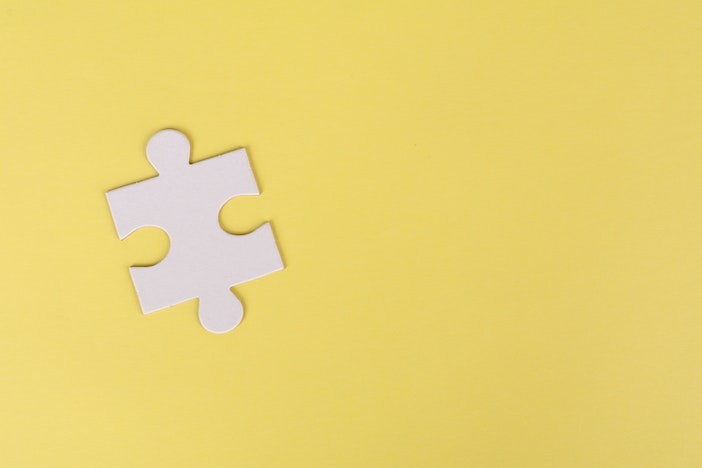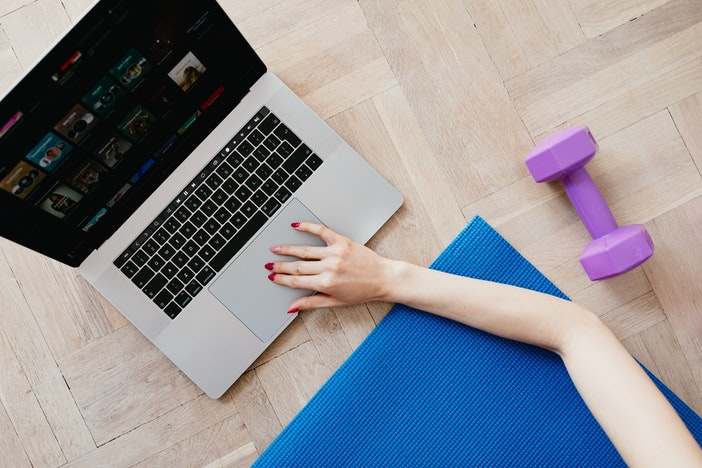Why would you need a microlearning guide? Chances are that you clicked on this article because you have heard of the term. And you are curious to find out what it means.
Or maybe you have a vague idea, inspired by the name itself, and you want to confirm your suspicions.
Either way, what you probably do not realize is that every day, you engage in various forms of microlearning activities.
When you study infographics, read a PDF, watch an animated video, or view an email or newsletter, you are consuming knowledge in small pieces. And that is what microlearning is all about.
Microlearning is more than just a buzzword. It is a tool that efficiently and effectively enhances learning in small doses. It is a learning device that can help to boost performance significantly.
What is Microlearning?
First, let us begin with what microlearning is not. We are all used to regular classroom learning or workplace training. You know, the kinds of training that need some form of structure for long-term results.
Macro learning focuses on comprehensive areas of skill or expertise.
Utilizing macro learning, you can learn how to code in Javascript or Python, and learn Product Design or Digital marketing. It is based on a structured curriculum and trails a longer, organized path to achieving expertise.
Microlearning as a learning model is the opposite of this. Microlearning is designed for grabbing and imbibing information in short bursts.
It is flexible and does not demand as much effort, but don’t let that fool you. It is great for knowledge retention and can lead to an improvement in productivity. And that is why many eLearning platforms such as LearnUpon are hopping on it.
Microlearning is the more time-effective counterpart to macro learning. It does not need much of a structure if any at all and focuses on shorter-term knowledge goals. It is a quick and easily accessible means of getting information.
But microlearning is not suitable for all kinds of learning, as you can imagine. Some fields require in-depth training and studying, and in this area, microlearning is sorely lacking.
Also, it is not the best learning model for complex subjects or concepts. Of course, that is not to say that it is useless in this area. Rather, it would need a ton of effort to make it suitable for learning concepts that are not simple or straightforward in nature.

Types of Microlearning
Say you just saw an absolutely mouth-watering photo of New England’s Lobster Mac and Cheese on Instagram. Now you have decided that you have got to learn the recipe for the meal.
The first source of the information you need that will come to mind is likely to be YouTube. So off you go, to watch recipe videos created by chefs and other cooking experts.
Without giving it any thought at all, you have engaged in microlearning. The videos that you watch, all typically less than 10 minutes long, present the information you need in bite sizes. And so you leave the app better informed and educated in a very short period of time.
Videos are not the only type of microlearning. In fact, it exists in several different forms. Let’s look at some of them briefly.
1. Short Videos
Videos can be a very engaging medium for transferring knowledge, so they are a very popular means of microlearning. Short videos are great for demonstrating processes. They are excellent in helping users to keep the information or knowledge that they get.
Short videos are suitable for a wide range of microlearning applications. They have been shown to be a very effective means of passing procedures to learners. They can be engaging and are an excellent alternative for students who do not enjoy text-based learning.
Different kinds of short microlearning videos can be used. Whiteboard animations use hand-drawn or computer-generated illustrations, images, and text generated on a whiteboard. They are often accompanied by narration.
Text-based or kinetic typography videos present moving or animated text using shapes, colors, graphics, various font styles, and narration to present topics or concepts in a way that is engaging. These are becoming increasingly popular.
Another form of microlearning video that is in demand is interactive videos. They are created to mitigate boredom and one-sided interactions between teachers and learners.
Interactive videos teach but create avenues for the learners to engage and interact in some form. This makes the information they get significantly better retained.
Other forms of microlearning videos include:
- Webinars
- Explainer videos
- Interactive videos

2. Infographics
Infographics offer information, data, or knowledge in the form of graphic representations. They make use of various forms and combinations of imagery, charts, graphs, and text to present a quick overview of a subject very clearly.
They are excellent for presenting otherwise complex information in a concise form. This makes it easier to analyze and understand.
As a result, users can easily digest information or data that would have taken much longer to process. Plus, they are visually pleasing to the eyes.

3. Podcasts
Videos are visual and auditory tools, but podcasts are usually entirely the latter. With podcasts, people can learn on the go, anywhere.
Whether you are on a morning jog, commuting to work, or relaxing after a meal, podcasts are a great tool for catching information and learning when you can.
Podcasts are basically micro-lectures on any topic that can be accessed from a learner’s device. Typically, they are audio-only, but more video-and-audio podcasts are being made these days.

4. Gamification
Games are fun and can be very immersive. And that is why they can be effective microlearning tools. They should focus on the subject or policy when used as microlearning mediums.
Microlearning games are typically multi-level. They require learners to prove that they have earned the right to move on to a more challenging level. Badges and points can be provided as rewards for passing a stage.
Games can be perfect for emphasis and knowledge retention.
The repetitions and levels help to ensure that the information intended to be passed across by the game actually sticks. They are so great for social interaction among learners who get to interact with each other via the game.

5. PDFs and eBooks
Passing information across using PDFs and eBooks is a very mainstream medium of microlearning. To some people, text-based learning presents an optimal means of learning. PDFs and eBooks are effective means of accessing information for these people.
PDFs and eBooks are the most common forms of microlearning and are ubiquitous. You can find PDFs on basically any subject or concept.
Interactive PDFs are a more modern solution to the problem of boredom and lack of visuals or interactions that traditional PDFs usually present. They incorporate rich media elements into a PDF, such as videos, audio, GIFs, images, links, buttons, and captions.

6. Simulations
Simulations are effective tools for demonstrating processes. They allow the learner to become a part of the environment surrounding the concept of the study and to immerse themselves in a semblance of the real experience.
With simulation, learners can practically learn concepts over a short time. They are able to recreate real-life situations and learn hands-on, with none of the potential consequences that would come attend them. Effectively, learners get to perform tasks before performing them in reality.
Simulation can come into use in many ways. For example, student pilots use simulators to recreate real flight situations. This way, they can do all the learning they need, without any consequences to passengers for their mistakes.

7. Mobile Apps
Mobile apps are a very powerful and very efficient means of microlearning. Smartphones are prevalent in society today, and microlearning platforms have taken advantage. They create apps that can deliver short bursts of information and learning.
There are different types of mobile microlearning apps. Some are Performance Support Tools (PSTs) that offer just-in-time learning for employees and other learners alike. They help boost productivity, says Marc Rosenberg, author, and consultant.
“A tool or resource, ranging from print to technology-supported, which provides just the right amount of task guidance, support, and productivity benefits to the user, precisely at the moment of need”
Marc Rosenberg
There are also mobile apps that provide supplementary support for macro learning. They help to retain knowledge and information received from that more formal learning model.

Pros of Microlearning
Microlearning makes effective use of time, is affordable, and it is flexible. Learners are able to stay engaged in learning material because of their brevity.
In addition, it is great for continuous learning and is much easier to access than more formal learning.
1. Time-Effectiveness
According to this 2019 study by LinkedIn, the most inhibiting factor to learning in the workplace is time. But time is not only a limiting factor in the workplace.
Students and other learners may find that they are short of time to enable them to study and retain information and knowledge.
That is what makes microlearning so effective. It passes information across in small, bite-sized chunks.
As a result, learners are able to put the scarce time they have into good use. Commuters, for example, can learn on the go, with the help of podcasts.
2. Affordability
Formal learning can be quite expensive. This is a function of many factors, a major one of which is the long training duration.
Because they are relatively smaller in size and length, microlearning costs much lower on average to produce. As a result, they are cheaper for both tutors and learners.
Microlearning courses are also cheaper to update. That ensures that the information on them typically stays up-to-date, in comparison to macro learning.
3. Ease of Access
Microlearning can be delivered in many forms, all of which are easily accessible by learners.
In fact, anybody with a smartphone, tablet, or computer can access the various forms of microlearning. Even learners with no internet access or smartphones can access it via text messaging.
4. Improved Retention
The Forgetting Curve was developed by Hermann Ebbinghaus, a German psychologist. It is used to illustrate the decline of memory retention over time.
According to the Forgetting Curve, 50% of what is taught to an average learner is forgotten within days. Hermann Ebbinghaus recommended repetition based on active recall to help boost retention.
That technique, along with many others, is used in microlearning. Spaced learning in little doses helps the brain to hold on to what is being learned more effectively and for longer.
5. Just-in-time Learning
This is an important benefit of microlearning for the learner. The information that they need is made available for access whenever they want.
Traditional means of learning mean that information would take a long time to process and digest.
As a result, it is not ideal for situations where information is needed urgently. Bite-sized content that is available on demand solves that problem.
No longer is it necessary to wait for the next classroom session or module.
6. Learning Engagement
Microlearning boosts learner engagement. The use of rich digital media such as videos, presentation slides, animations, GIFs, charts, graphs, music, and other forms of visual and auditory tools helps to attract and keep the learner’s attention.
This is especially effective as the learning process only comes in small doses.
Cons of Microlearning
Microlearning comes with a lot of pros that make it suitable for learning with convenience. But microlearning is not the perfect learning model. It also has certain drawbacks that you should be wary of.
1. Not Suitable for Detailed Learning
Microlearning is not always the best method of learning when it comes to subjects that are far-reaching and detailed.
Courses that have very wide scopes can be broken down into smaller nuggets by microlearning. But it does take a ton of effort. And even then, it is unlikely to work as effectively for learners as traditional learning.
2. Not Suitable for Complex Subjects
Imagine trying to learn Quantum Mechanics using microlearning. Sure, it will not be completely ineffective, especially for newbies. But the more complex the course or concept gets, the less effective microlearning becomes at teaching it.
In this situation, macro learning techniques are a better fit.
FAQs
Q: What is microlearning?
Microlearning is a training approach or model that delivers information or knowledge in small chunks or sizes. It transfers information to learners in small nuggets, focusing on a central subject or concept.
Q: What are the different types of microlearning?
There are tons of ways that microlearning can facilitate learning. It can come in the form of videos, interactive resources, infographics, mobile apps, podcasts, ebooks and PDFs, flipbooks, games, and simulations.
Q: Is microlearning suitable for all forms of learning?
No, microlearning is not always the solution you need. Sure, it can be very convenient, time-saving, and easy to access. But there are situations where it falls behind more traditional forms of learning.
When the subject or concept is very complex or vast in scope, you may find that microlearning loses its effectiveness.
Summary
In a world where information is consumed on the go, in small sizes, and easily accessed, microlearning is generally a constructive means to improve learning and boost productivity.
Microlearning comes in several formats. The common factor binding these formats is the transfer of information packaged in small sizes to the learner.
The use of animation and whiteboard videos, webinars, apps, infographics, podcasts, etc., all help to make this happen.
But microlearning is not always the way to go. This is especially for complex and wide-reaching, detailed concepts and subjects.
This comprehensive guide discusses what it is all about, the types, and the pros and cons of microlearning as a learning model.
Finally, you may also be interested to know what the pros and cons of online learning are.
Thanks for reading.







